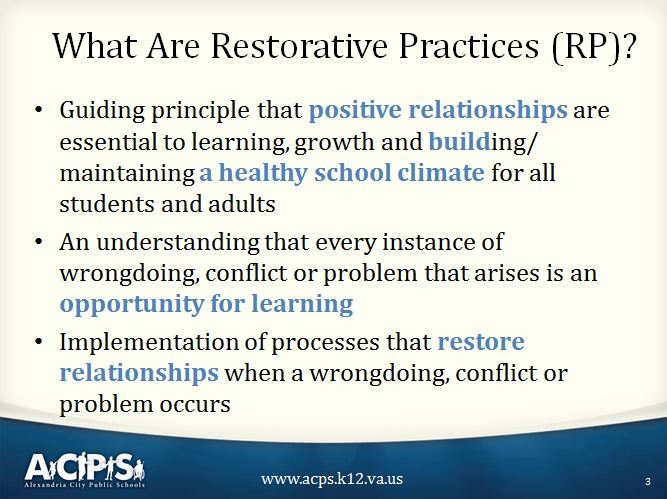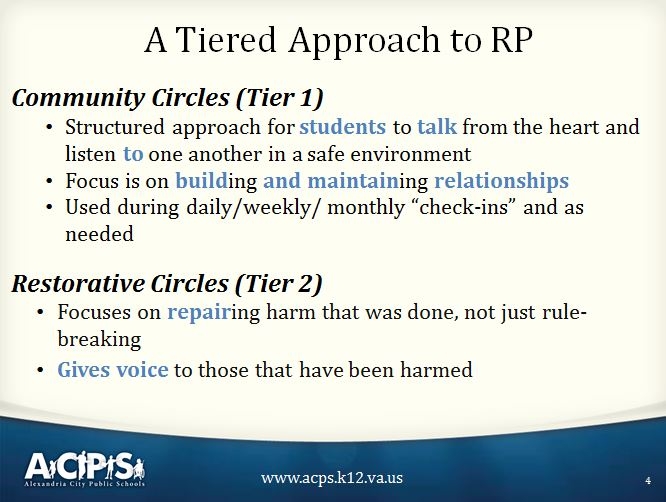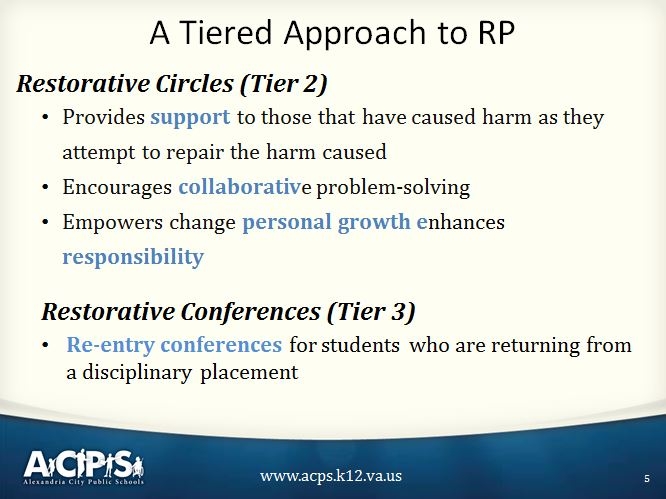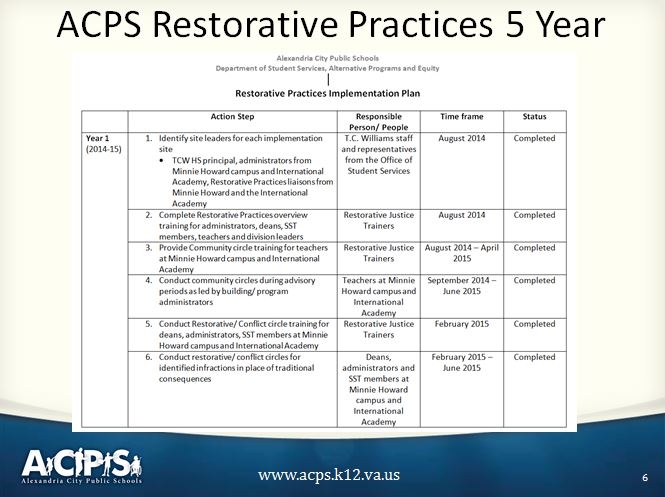This week, Superintendent Alvin L. Crawley presented the progress ACPS has made on implementing restorative practices at T.C. Williams High School.
Restorative practices, the strategies used to repair the harm caused by negative behavior, are an important part of the broad foundation in creating a system of positive behaviors and can help reduce suspensions and improve the way discipline is handled in our school division.
| “The restorative practices movement seeks to develop good relationships and restore a sense of community in an increasingly disconnected world.” — Wachtel, T., Costello, B. and Wachtel, J., 2009, The Restorative Practices Handbook for Teachers, Disciplinarians and Administrators |
T.C. Williams began implementing restorative practices in 2013. Full integration takes between three and five years and although there is anticipation that it will lower suspension rates consistent with expectations, ACPS is using a multi-year implementation. Eliminating dis-proportionality within the discipline data remains a top priority, as evidenced by indicators in the ACPS 2020 Strategic Plan. Although T.C. Williams has lower than average suspension rates than other school divisions across Virginia, 4.2 percent of T.C. Williams students have been given short-term suspensions at least once. This rises to 7.91 percent for African American students. Some school divisions in Virginia are as high as 22 percent for all suspensions and 25 percent for African American students.
Training is at the center of the ACPS five-year plan to implement restorative practices. ACPS has also launched a Cultural Competency plan to improve equity practices across all schools and uses Positive Behavioral Interventions (PBIS) and a Multi-Tier System of Supports (MTSS). Further descriptions of PBIS and MTSS are provided in the ACPS Student Code of Conduct handbook.
As part of the commitment to the implementation of restorative practices, ACPS has provided extensive training in restorative practices and has trained several hundred staff members over the last year. At T.C. Williams High School, Gregory Baldwin, tenth-grade Dean of Students, and Jessica Hillery, Lead Academic Principal, have completed part one of the restorative practices facilitators training and will complete part two this summer. In addition, the superintendent has completed the week-long training, demonstrating his commitment to fully implementing restorative practices at ACPS.
So what does this mean for discipline at T.C. Williams?
Restorative practices get our scholars thinking about how their actions impact others involved in a situation and how their actions impact their school. It takes the focus off them and helps them see that there are many parts of a community and how their actions affect those parts,” said Baldwin.
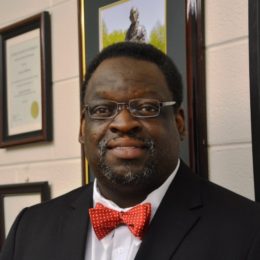
Gregory Baldwin, tenth-grade Dean of Students at T.C. Williams High School
Baldwin, who graduated from T.C. Williams in the 1980s, increased his use of practices as soon as he returned from the training, using them to address student behavior, facilitating parent conferences and class discussions.
Using restorative practices to address behavior situations, administrators have students, and sometimes parents and staff, around the same table in an attempt to find a resolution to avoid suspension where possible. The process may not eliminate suspension, but it may decrease the length of the suspension or the severity of consequences when restoration has successfully been accomplished.
ACPS staff and students who have been exposed to the program and practices are excited.
Our goal is to create an environment conducive to learning. Decreasing suspensions and increasing achievement is what it’s about. It provides an opportunity to build community and change the climate and culture of our school and community. I’m for restorative practices and any other research-based solutions that ensure the success and safety of our students,” said Baldwin.
Hillery has been facilitating community circles with teachers to help them facilitate circles within their own classrooms.
This could really change our work at T.C. by building a sense of community within our classes. It gives our students an opportunity to be heard, which can influence attendance and behavior in a positive way. It has the potential to change the culture of our school.”
She was able to apply the principles of restorative practices in a student discipline situation by using a restorative circle within a couple of days of the training.
Students sit down and have conversations and build connections. Circles help students get to know each other, which can help eliminate friction, especially when students see the development of a growing sense of community,” said Hillery.

Jessica Hillery, Lead Academic Principal at T.C. Williams High School
When teachers return to school for orientation toward the end of the summer, Hillery envisions the school cafeteria set in circles. Teachers would have the opportunity to model and experience the benefits of circles so that they can take what they learn back to their classrooms to implement with their students at the start of school.
While both Baldwin and Hillery agree that the implementation of restorative practices can have a profound effect on the school culture, they acknowledge that to implement it properly will take time.
“We must build the capacity needed to create and integrate this new framework. This will include training and implementation and will need to be done in phases,” said Baldwin.
Both are committed to making that happen. The next step is for both to participate in the ‘train-the-trainer’ part of their facilitators training program this summer so that they can empower staff at the school to engage in restorative practices and influence the culture of the school.
What are Restorative Practices?
